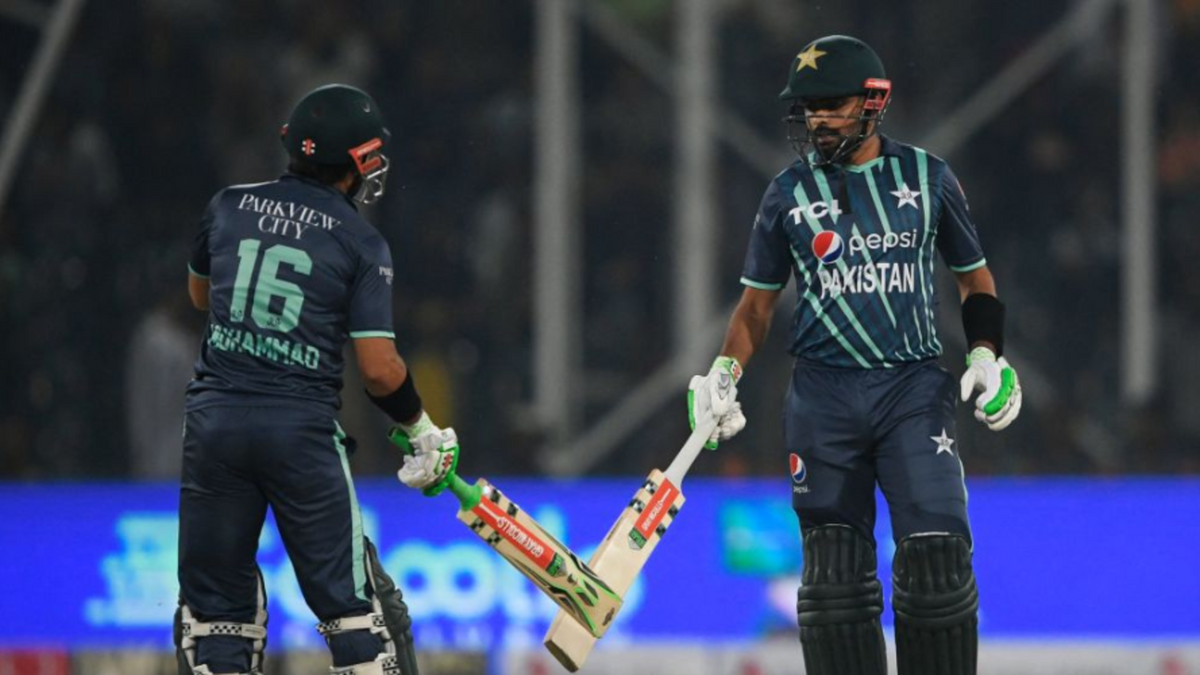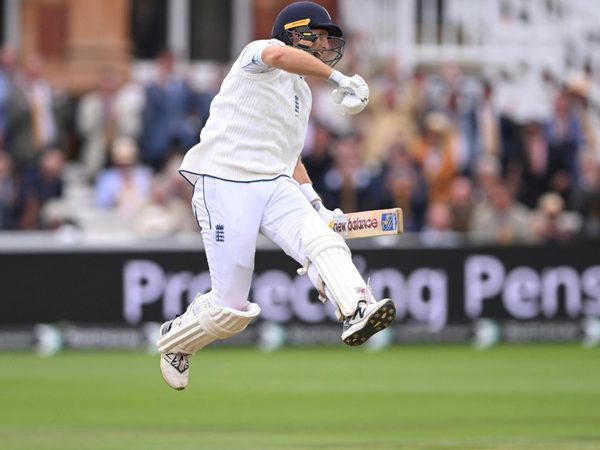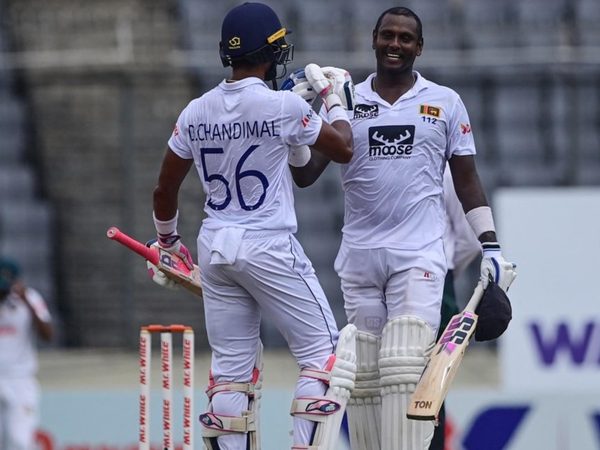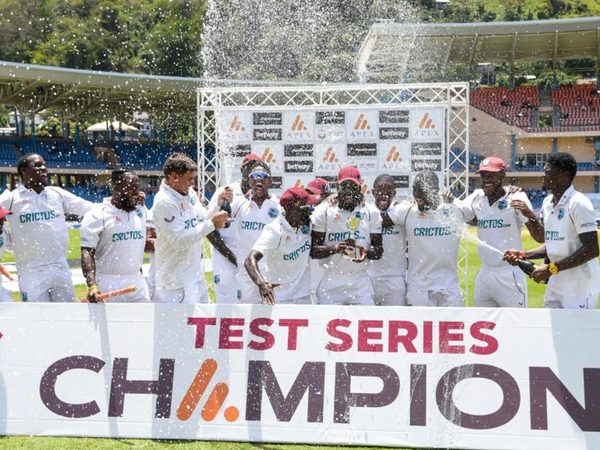
Pakistan have not won the T20 World Cup since 2009. After reaching the semi-final at the 2021 edition, they will hope to go all the way in Australia in 2022. For that to happen, however, there are several questions that they need to answer first, writes Shashwat Kumar.
What will Pakistan’s pace attack look like at the T20 World Cup?
Shaheen Shah Afridi has not played for Pakistan since their Test series in Sri Lanka. Naseem Shah, who enthralled during the Asia Cup, has played a solitary game for Pakistan in the ongoing series against England and is currently fighting a bout of COVID-19 after contracting pneumonia.
Haris Rauf has offset their absences to an extent, but the T20 World Cup will be a different kettle of fish altogether. Mohammad Hasnain, Mohammad Wasim Jnr and Shahnawaz Dahani have all had their chances, but all of them have proved expensive. They still have time to rediscover their mojo, with another T20I against England and an entire tri-series in New Zealand lying in wait. The early evidence, though, has not been very promising.
Pakistan, thus, are fretting over Naseem and Shaheen’s availability. Even if they do return, they will have to hit their straps instantly. Pakistan’s opening fixture at the T20 World Cup is against India – a game that can define how their campaign unfolds. In 2021, they rode on Shaheen’s brilliance to ease past India. That victory also set the tone for a remarkable run to the semi-final. If he does not recover sufficiently, and if Naseem cannot return to full fitness, Pakistan could have a problem on their hands.
Can Pakistan balance out their all-rounders?
Pakistan took field in the 5th T20I with four players who could be classified as all-rounders – Aamer Jamal, Iftikhar Ahmed, Mohammad Nawaz and Shadab Khan. Jamal held his nerve in a splendid last over, while Iftikhar wrapped up his spell by just conceding 16 runs, including the timely wicket of Dawid Malan. Yet, among the quartet, only Shadab qualifies as a specialist bowler.
The jury is still out on Jamal, who has barely played any T20I cricket. However, it is evident that Pakistan only use Iftikhar and Nawaz as favourable match-up bowlers. In Australia, the pitches may not aid the spinners a lot. Playing two spinners in addition to Shadab may be a risky ploy.
Iftikhar and Nawaz’s batting abilities also seem slightly undercooked: Nawaz has been inconsistent, while Iftikhar’s batting tempo is a glaring issue. They may be better served including either a specialist batter to add depth or a specialist bowler who can fulfil a particular role.
Having different options is not perceived as a vice, but having too many options can be an impediment. Unless Pakistan figure out a way to balance out their eleven, they could find that out the hard way.
What is Pakistan’s best batting approach?
Pakistan’s Asia Cup campaign was dominated by discussions around their strike rate. Babar Azam and Mohammad Rizwan seemed to bat too sluggishly, and Pakistan did not fully utilise the batting resources at their disposal. Quite often, the top order would chew up deliveries and leave the middle order with the unenviable task of making a massive impact in a very short space. In this series, things have changed a little.
Babar and Rizwan have tried being more aggressive at the top of the order. The chase in the 2nd T20I drove that point home, wherein both returned unbeaten and made a tall target look routine. The other two wins, though, came when Rizwan has held the batting together to ensure Pakistan reached a par score.
This was what Pakistan aimed to do at the Asia Cup and they were criticised heavily when it backfired. There were even suggestions that Pakistan needed to risk losing a game in order to post above-par totals. But with a floundering middle-order, that might be easier said than done.
What, then, is really their best approach? Perhaps somewhere in between. Rizwan, irrespective of conditions and opposition, continues to score runs. He can probably function as an anchor, adjusting his game based on the game situation. The rest, including Babar, can perhaps be a little more cavalier, in the knowledge that even if they perish for the cause, Rizwan will hold things together.
It is not an ideal situation. But changing your T20I philosophy at such short notice is not straightforward either.
Where do Haider Ali and Shan Masood figure in Pakistan’s T20I puzzle?
Before the series against England, Haider had last represented Pakistan in T20Is in last December. It was not because of lack of talent but because he blew hot and cold far too often. Not a lot has changed this series. If anything, his failure to sparkle has piled more pressure on a youngster who could do without that burden.
At his best, he is probably the answer to Pakistan’s middle-order woes. He can attack through the middle overs and is blessed with an extraordinary range of strokes. So far, that has not materialised in international cricket as much as Pakistan would have liked to. Considering how trigger-happy Pakistan are usually with their selections, time might not exactly be a luxury for Haider.
Masood’s case is curious and compelling. Despite having made his international debut in 2013, he only made his T20I bow in the series opener against England. Primarily an opener, he began batting in the middle order during the most recent edition of the National T20 Cup, probably to acclimatise himself to Pakistan’s demands. Apart from a 40-ball 65 not out, however, there has been nothing to shout home about.
If you were to be harsh, you could even say that in the process of trying something out of the box, he has considerably reduced his chances of success – the dismissal at Lahore on Wednesday being a perfect example. Pakistan, over the past couple of years, have fielded an awful amount of questions around their middle order. Haider and Masood have, in some parts, been assumed as part of the solution. That, though, has not yet come to the fore.
When do Pakistan start worrying about their short-ball woes?
Right about now. The T20 World Cup is not far away and amid all the talk about approach, method and philosophy, Pakistan also have to solve the rather rudimentary problem of facing the short ball. Their Super 12s group consists of India and South Africa. India will have the firepower even if Jasprit Bumrah does not recover, while South Africa can call upon Anrich Nortje and Kagiso Rabada.
In the ongoing England series, Babar has been dismissed twice by Mark Wood – a result of sheer, unadulterated pace. Haider, too, has looked very uncomfortable when the ball has been banged into the track. Pakistan’s string of middle-order batters and finishers are also predominantly front-foot players.
Moeen Ali has downplayed Pakistan’s tendency of getting out to short balls. Instead, he spoke about England using that ploy to make the most of Wood’s services. But with video analysts dissecting every moment of every series, do not be surprised if Pakistan are left facing a short-ball barrage on arrival in Australia.








